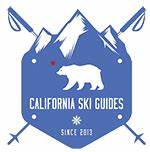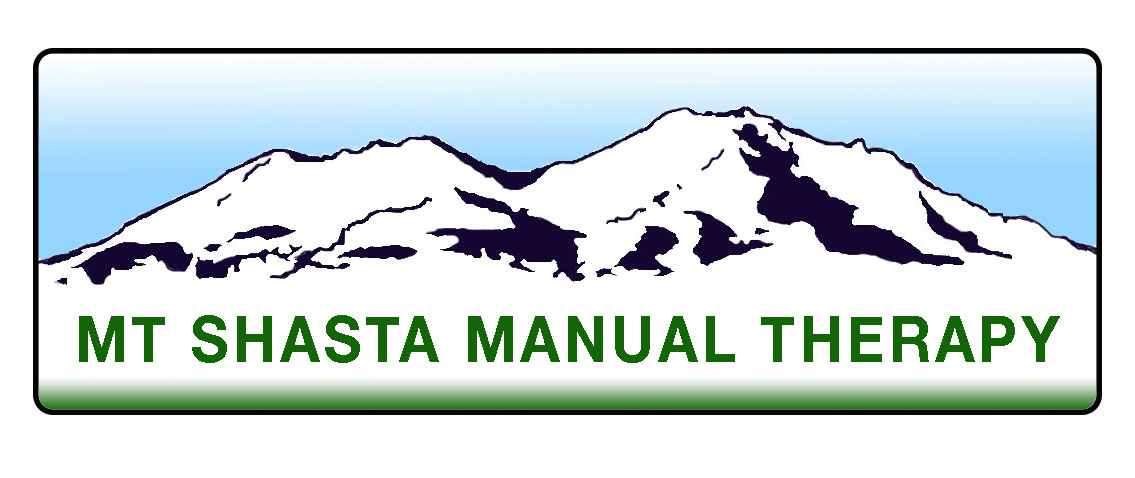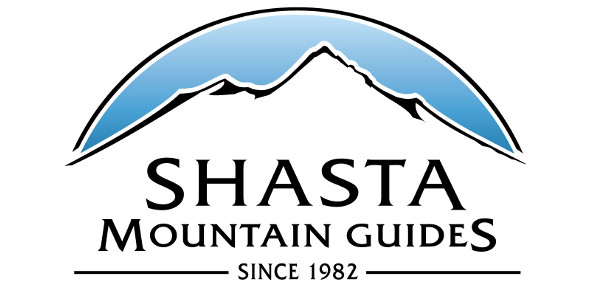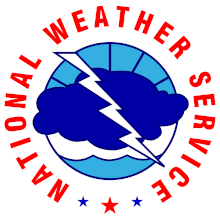You are here
Avalanche Advisory for 2014-01-03 07:19:03
- EXPIRED ON January 4, 2014 @ 7:19 amPublished on January 3, 2014 @ 7:19 am
- Issued by -
Bottom Line
Happy New Year!
The avalanche danger on Mt Shasta's glaciers is LOW. Open bergshrunds, weak snow bridges and ice patches will be encountered on all of the glaciers. Self-arrest will likely be difficult with the current conditions. All other areas do not have enough snow to warrant an avalanche danger rating.
However, rock fall is ever present on the mountain. Climbing Mt Shasta is not recommended at this time.
Avalanche Problem 1: Normal Caution
-
Character ?

-
Aspect/Elevation ?

-
Likelihood ?CertainVery LikelyLikelyPossible
 Unlikely
Unlikely -
Size ?HistoricVery LargeLargeSmall

The avalanche danger on Mt Shasta's glaciers is LOW. Skiing on the glaciers at this time is rough and icy. Any skiing on the north or east side glaciers would be not for the faint of heart! Be cautious of open bergshrunds, crevasses, ice patches, and rock/ice fall. Self arrest may be difficult with current conditions.
Recent Observations
Most notable of happenings since last week was a rockfall accident on the south side of Mt Shasta on the Avalanche Gulch (AG) route. Three climbers were attempting to climb the AG route on January 1st and were right of 'The Heart' at approximately 11,700 feet when a shower of rocks struck the climbers and knocked them off their feet. Each fell several hundred feet over rock and ice. One female suffered critical head and leg injuries though she should make a full recovery. A male climber suffered another head injury and also a broken elbow. The third climber got lucky and had cuts/contusions and abraisions only. Both the critical female and male climbers were hoisted off the mountain with cooperation between Siskiyou County SAR, California Highway Patrol helicopter H-16 and a USFS Climbing Ranger. The climbers had little to no experience and did not have ice axes or crampons. They did say they were wearing helmets but "they flew off" during their falls and never located. This accident is exactly why we do not recommend climbing this route when conditions are as such.
Mt Shasta has received no new snow over the past week and conditions continue to be the same: partly cloudy to mostly sunny and mild. Recreation has been in the form of ice skating, mountain biking, hiking, ice fishing and anthing else not on snow. Most upper elevation lakes are frozen and pretty good for skating.
Dwindling, patchy and downright desperate snow conditions only a couple inches deep at best can be found above 6,500 feet on shaded, northerly slopes. Other aspects are devoid of snow. Aspects that host the most snow (cold, north facing) consist of sugary, faceted snow with various near surface crusts. When the snow starts falling this winter, we will be watching these lower faceted/crust layers as they could be problematic with loads of new snow on top. The best developed facets and most snow has been seen over in the Ash Creek Butte area. This geographic cone is popular for snowmobilers and riders will need to be heads up when riding commences in Ash Creek's bowls.
Beyond the gate at Bunny Flat and the Sand Flat Winter Trails, snow is gone right now and skiing is not possible until we get more snow. For the most hard up skiers, Shasta's glaciers are the only skiing to be had in the area, or one of the long, very thin and likely rocky snow gullies on the east and north aspects.

Aerial photo of the South side of Mt. Shasta, taken 12-18-13. (Photo: H Meyers)

The North Side of Mt. Shasta with the Hotlam Glacier in center, Hotlam/Wintun ridge left, Shastina to the far right. Taken 12-18-13. (Photo: H Meyers)

The East side of Mt. Shasta, taken 12-18-13 (Photo: H Meyers)
Terrain: Remember most of the terrain that we like to play on is greater than 30 degrees. Avalanches are possible on anything steeper than 30 degrees. Avoid cornices, rock bands, terrain traps and runout zones of avalanche paths.
Weather: Most of our areas avalanche danger will occur 24-48 hours after a storm. We still can see persistent weak layers from time to time and we always will be sure to let you know about that! Heed the basic signs: Wind (significant snow transport and depositions), Temperature (rain/snow/rain/snow, which in turn weakens the snowpack), and Precipitation (Snow or rain add weight and stress to the current snowpack).
Snowpack: If snow accumulates, give the snowpack a chance to adjust to the new snow load before you play on or near steep slopes (greater than 30 degrees). Most direct action avalanches occur within 24-48 hours of recent snowfall. Watch for obvious signs of snowpack instability such as recent natural avalanche activity, collapsing of the snowpack (often associated with a “whumphing” sound), and shooting cracks. If you see these signs of instability, limit your recreation to lower angle slopes.
Human Factor: Don’t forget to carry and know how to use avalanche rescue gear. You should NOT be skiing or climbing potential avalanche slopes without having beacons, shovels, and probes. Only one person in a group should be exposed to potential avalanche danger at a time. Remember, climbing, skiing, and riding down the edge of slopes is safer than being in the center. Just because another person is on a slope doesn’t mean that it is safe. Be an individual! Make your own decisions. Heed the signs of instability: rapid warming, “whumphing” noises, shooting cracks, snowing an inch an hour or more, rain, roller balls, wind loading, recent avalanche activity.
Weather and Current Conditions
Weather Summary
In Mt Shasta City this morning at 0500, we have clear skies and a current temperature of 37F degrees.
On Mt Shasta (South Side) in the last 24 hours...
Old Ski Bowl - 7,600 feet, we have no new snow, with a snow depth total 1-2 inches in shaded and/or northerly facing aspects. The current temperature is 43F with a low of 39F and a high of 51F.
Gray Butte - 8,000 feet, the current temperature is 41F. Temps have ranged from a low of 41F to a high 51F. Winds were calm for half the night, averaging 1-8mph and easterly in nature up until 2300 when they switched to northwest and have averaged 20-30mph with gusts to 49mph.
Castle Lake and Mt Eddy (West side of I-5)...
Castle Lake - 5,600 feet, the current temperature is 45F with a low of 41F and a high of 51F. Castle Lake has no new snow with a current snowpack of 1-2 inches in more shaded areas and/or northerly aspects.
Mt Eddy - 6,500 feet, the current temperature is 37F with a low of 37F and a high of 51F. Winds have averaged 2 mph with gusts to 9 mph and southerly in nature. Snow depth total is 1 inch.
THIS SEASON: Happy New Year! We'll reset the numbers and see where we stand this year, 2014. While it's quite early still, thus far, since September 1st (the wet season), we have received 2.82 inches of water, normal is 16.36 inches, putting us at 17% of normal. For the month of January, Mt Shasta has received 0.00 inches of water with normal being .48 inches. For the year 2014, Mt Shasta has received 0.00 inches of water, normal is .48 inches.
Mt Shasta finished off 2013 with exactly 10.00 inches of water, normal is 43.21, putting us at a meager 23% of normal. Let it be known that a DESERT is classified as an area that receives 10 inches of water or less per year. Welcome to the Mt. Shasta area desert biome.
December 2012 was wetter than the entire 2013 calendar year (10.43"). WOW!
WEATHER SYNOPSIS:
Welcome to sunny and beautiful 2014. We hope you had a safe holiday. Prepare to enjoy another sunny and clear weekend. A pattern change and some precipitation next week are showing on some weather models, but no big storms on the horizon yet. That being said, the Mt. Shasta area probably won't see much more than a few showers at best for the beginning of the week. High pressure dominates and continues to send most weather north of the Pacific Northwest.
Check these models out... They are hopeful! On the left is total precipitation (water) for January and on the right is total precip for the first two weeks of February.


| 0600 temperature: | 43 |
| Max. temperature in the last 24 hours: | 51 |
| Average wind direction during the last 24 hours: | East |
| Average wind speed during the last 24 hours: | 5 mi/hr |
| Maximum wind gust in the last 24 hours: | 49 mi/hr |
| New snowfall in the last 24 hours: | 0 inches |
| Total snow depth: | 0-2 inches |
Two Day Mountain Weather Forecast
Produced in partnership with the Medford NWS
| For 7000 ft to 9000 ft | |||
|---|---|---|---|
|
Friday (4 a.m. to 10 p.m.) |
Friday Night (10 p.m. to 4 a.m.) |
Saturday (4 a.m. to 10 p.m.) |
|
| Weather | Sunny | Clear | Sunny |
| Temperature (°F) | 43 | 30 | 43 |
| Wind (mi/hr) | Northwest 10-20 | Northeast 10-20 | East 5-15 |
| Precipitation SWE / Snowfall (in) | / 0 | / 0 | / 0 |
| For 9000 ft to 11000 ft | |||
| Friday | Friday Night | Saturday | |
| Weather | Sunny | Clear | Sunny |
| Temperature (°F) | 39 | 32 | 46 |
| Wind (mi/hr) | West/Northwest 30-40 | North/Northwest 0 | North/Northwest 25-35 |
| Precipitation SWE / Snowfall (in) | / 0 | / 0 | / 0 |


























































